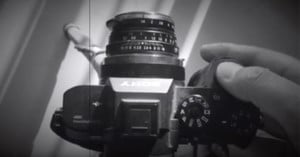
This Adapter Gives Manual-Focus M Lenses Autofocus on Sony Cameras
This is pretty wild: the lens adapter company Techart has announced that it has created the world's first Leica M-mount to Sony E-mount autofocus adapter. That's right. Autofocus.

This is pretty wild: the lens adapter company Techart has announced that it has created the world's first Leica M-mount to Sony E-mount autofocus adapter. That's right. Autofocus.
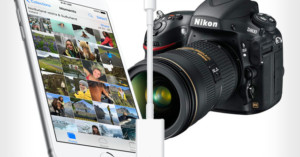
Apple is rolling out iOS 9.2 today, and among a host of minor features and fixes is new iPhone support for Apple's Lightning to USB Camera Adapter. This means you can now connect your camera to your iPhone and import photos directly without having to use a computer as the middleman.
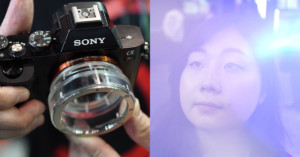
If you've always wanted to go crazy and creative with lens flares in your photos or videos, then Technical Farm's new Flare Adapter is for you. It's a see-through lens adapter that lets light leak into your shots from between your lens and your camera.
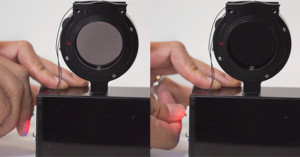
At the IBC 2015 trade show in Amsterdam, which just wrapped up a couple of days ago, the camera gear company Genus was showing off a prototype of a groundbreaking new product: an electronically controlled neutral density (ND) filter adapter. It was a Canon EF to Sony E lens adapter that had a dial that lets you adjust the level of ND filtration electronically.
Dan Chung of News Shooter filmed the short video above in which Genus shows off the prototype. Chung calls it "one of the most impressive things we saw at IBC this year," and "the holy grail of DSLR filmmaking."
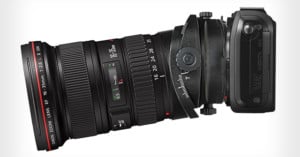
In the future, instead of buying a dedicated Canon lens for tilt and shifting movements, you may be able to simply buy a tilt-shift adapter for your existing EF lenses. A newly surfaced patent suggests that Canon has been working on that kind of universal adapter.
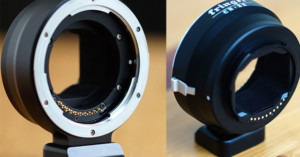
If you happen to have a plethora of Contax lenses stored away and are now busy playing with a Sony A7 or NEX camera then we have some exciting news for you. Thanks to eBay shop Kens_Camera, it is now possible to purchase a Contax N-mount to Sony E-mount adapter. The seller explains he designed the adapter himself and that it is an entirely automatic adapter with only slight autofocus limitations.
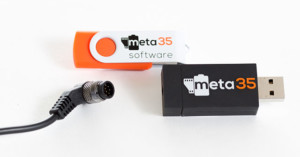
If you shoot film, you know how difficult it can be to properly organize your photographs once they have been digitized to your computer. Modern digital cameras allow easy organization with built in metadata that provides every bit of information you could ever need; however, digitally scanned photos contain no such data. Promote Systems has introduced the Meta35, a device to easily import and sync your film camera’s metadata.

What do you get if you mount a giant $60,000 broadcast lens to a tiny mirrorless camera? That's what YouTube user SirJonnyCargo recently set out to find out. He used a Fotodiox lens adapter to mount his Panasonic GH4 onto a Fujinon XA55 lens. The results were actually very impressive.
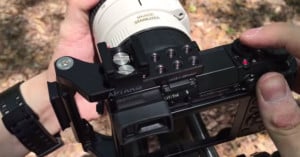
Last month, Kipon announced the world's first autofocus-capable adapter for using Canon EF lenses on Micro Four Thirds cameras. If you've been thinking about picking one up, here's some good news for you: the autofocusing speed appears to be quite fast.
Japanese Kipon distributor SHOTENKOBO has released the 2-minute video above that shows some tests of the adapter using a Canon 70-200mm f/4L IS lens on a Panasonic GX7.
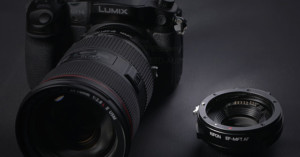
Five years ago, the Shanghai, China-based lens adapter company Kipon became the first to offer a Canon EF to Micro Four Thirds adapter with electronic aperture control. The company is now taking its adapter another big step forward: its new Canon EF to MFT adapter is the world's first to feature autofocus.
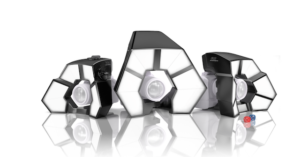
What you see above is one of the most unusual pieces of lighting gear we’ve ever chanced across. Looking a bit like a prop from the upcoming Star Wars film, this contraption is actually a macro flash adapter designed by Polish photographers Agnieszka and Ernest Lysak.
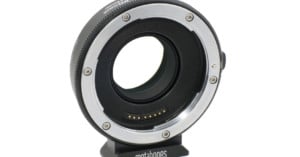
Metabones already has an impressive lineup of Speed Boosters -- the lens adapters that can bypass crop factors, increase maximum aperture and more -- but they made headlines yesterday when they added a much sought-after adapter to the lineup: the Canon EF to Micro Four-Thirds model.
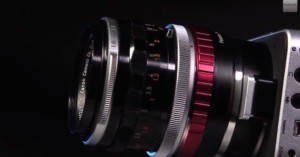
While not the first company to enter the speedbooster game, Fotodiox is turning some heads and dropping some jaws with their newly-released Fotodiox Excell +1 speedbooster.
Designed in two models -- a Nikon F version and a Canon FD glass version -- the Excell +1 lets you slap your ‘old’ glass on your MFT body and gives you an extra stop of light for about a third of the price of the competition.
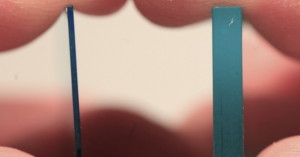
Well, I have to admit this has been a fun series. I’ve learned a whole lot. That’s what makes this so fun -- I get some results I don’t understand, get some help figuring out what is going on, and before I know it, I’ve learned something that explains other things I haven’t been able to understand.
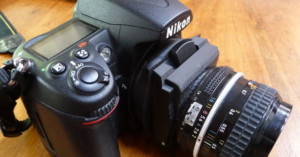
When it comes to DIY tilt-shift, there are a few different options out there, but none of them that we've seen are quite as impressive and practical as this 3D printed method from Instructables user Cpt.Insano.

The first post I made on sensor-stack thickness wallowed deeply in PhotoGeekery. This one is meant to be of practical use so I’ll try to leave the Geek stuff out. We’ll start with the simple facts.

NOTE: This is a Geek Post. If you aren’t into geeky photo measurements, or into adapting lenses from one brand of camera to another, you’ll not be interested.
A year or two ago, I wrote a blog post where I basically showed lenses shot on adapters on other cameras aren’t acceptable for testing. If you run them through Imatest the results aren’t accurate. I suggested that reviewers shouldn’t test lenses on adapters, although obviously adapters are a great way to use interesting lenses to take pictures.
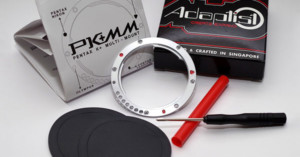
To the world of lens mount adapters comes a new creation by Adaptist. Called the Pentax K+ Multi-Mount, this adapter takes a unique approach to the mounting system allowing you to attach Nikon F-mount, Olympus OM-mount, Contax/Yashica C/Y-mount and Konica AR-mount lenses (in addition to the standard K-mount, of course) to your Pentax DSLR, all within this one integrated solution.
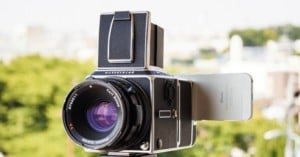
Back in early August, we told you about Badass Cameras and their plan to create an adapter that could turn your iPhone into an uber-cheap (relatively speaking) digital back for your old Hasselblad film camera. Well, the wait is over. Arriving on Kickstarter a bit later than expected, the Hasselnuts adapter does just that.

This weird looking contraption is a homemade adapter that lets you shoot digital photographs with a smartphone through the viewfinder of an SLR. Photographer Michael Amos built it a couple of years ago using a camera eyepiece and a smartphone case.

It's not uncommon for photography companies to launch strange teaser campaigns that get folks wondering what the company has up its sleeve. In the past, we've seen everything from bags of walnuts to mysteriously worded ads. The latest from Sigma falls into the second category, and has the entire photographic community buzzing with speculation and excitement.
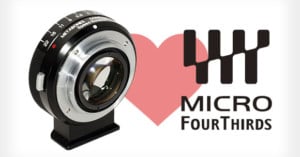
Back in January 2013, lens adapter company Metabones rocked the camera world by announcing the Speed Booster, an SLR-to-mirrorless lens adapter that can magically increase your maximum aperture, sharpness, and angle of view.
So far the adapter has been released for Sony NEX and Fuji X cameras, but greater things are on the horizon: Metabones will be releasing the Speed Booster for Micro Four Thirds cameras as well.
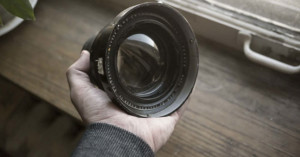
Originally produced for the US military in WW2, the Kodak Aero Ektar 178mm f/2.5 is a large-format monster of a lens. Mounted in bombers, facing down at Europe, this lens was sold to the US government for the price of a family car. It found its way into military surplus after the war, and was widely used in journalism and by professional photographers.
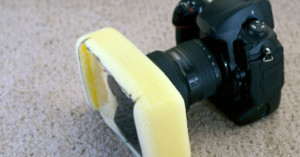
A few years ago, photographer Samuel Chapman of The Rocket Factory found himself with an annoying problem on his hands. After purchasing a number of neutral density filters for his DSLR, he found that Nikon's $2,000 14-24mm lens didn't have any good way of being used with a filter.
He had already paid hundreds of dollars each for his fancy filters, so he decided to make a makeshift adapter for the 14-24mm lens... using a sponge. The result is a product Chapman calls the "FX Sponge Filter Holder 5000."
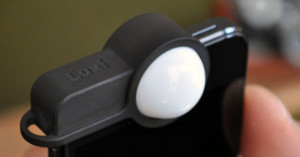
Back in March 2011, we featured an iPhone app that lets you use your iPhone as a makeshift light meter. The app apparently works pretty well, but if you've been looking for a fancier solution involving your iPhone, one has finally arrived.
It's called the Luxi, and is a small clip on accessory that turns your iPhone into a proper light meter.
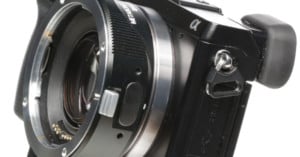
When we first shared the news that Metabones had announced a "speed booster" adapter that makes your lenses faster, wider and sharper, not a lot of people had gotten their hands on it yet. But now that the most exciting accessory on the block has been accepted as definitely NOT an elaborate April Fools joke, a few websites have taken turns with it, and initial reviews all seem to be positive.
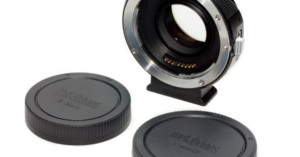
If you read the title and thought "huh?" you're not the only one. Hearing that an adapter can actually make your lenses faster and wider sounds a bit like photography science fiction, but it's true and it's getting some serious attention online -- it's Metabones' new Speed Booster.
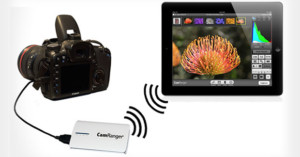
Wireless adapters for digital cameras can be very pricey accessories, especially when you're dealing with high-end DSLRs. Manufacturers can squeeze more money out of those who pay thousands for a camera by charging hundreds for an adapter, even though a cheaper one could work just fine. What's more, the adapters are often designed specifically for certain cameras, making them useless if you change models or makes.
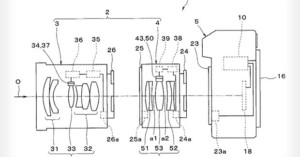
Olympus currently offers a $144 adapter called the MMF-2 for photographers who want to use an existing collection of Four Thirds-mount lenses on a Micro Four Thirds camera. The accessory makes the lenses mountable and acts as a middleman between the lenses and the cameras, but its features pretty much end there. It appears that Olympus is working on a much fancier adapter: one that actually contains lens elements and contains focusing/stabilization features as well.
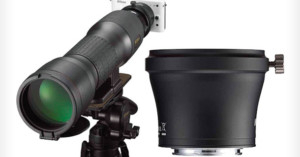
Digiscoping is when a photographer attaches an optical telescope to a digital camera and uses it as a super-telephoto lens. Although the image quality isn't as good as an actual camera lens with the same focal length, it's a much cheaper option for people who already own high-powered telescopes -- bird photographers, for example. Nikon is no stranger to the digiscoping game, having released adapters for its DSLRs and compact cameras, but today it announced new accessories that bring digiscoping to the 1 Series mirrorless lineup.
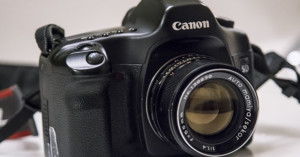
If you want a 50mm f/1.4 lens for your DSLR, you'll need to shell out at least a couple hundred bucks, even if you buy one made by a third-party manufacturer. For those of you who don't mind losing autofocus, you can get the same focal lengths and apertures for much cheaper by buying some old glass and an adapter. By much cheaper, we mean as low as $10-$20! India-based photographer Brock Whittaker recently did this after seeing an auction on eBay for an old Mamiya camera kit.
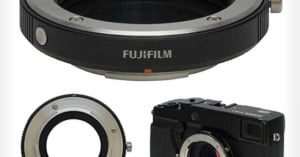
There are already options available for those people who want to use Leica …
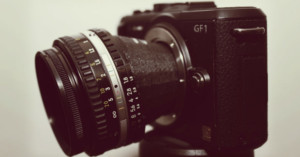
We really enjoy DIY projects for photographers, and as such we've featured everything from the ultra simple to complex light-painting robots. But what excites us about Instructables' DIY tilt-shift adapter isn't just the durable plunger adapter you end up with, but rather the idea that one could manufacture their own camera accessories with a little bit of design skill and a 3D printer (check out Shapeways if you don't have one sitting around).
For this particular project you'll need a camera, an extra lens, some digital calipers, 3D design software like 123D, and access to a 3D printer or 3D printing service. After that just follow the steps in this video and you can wind up with results like the ones you see below.

Here’s a brief glimpse showing Nikon’s new $59 WU-1a wireless adapter in action, being used to control …
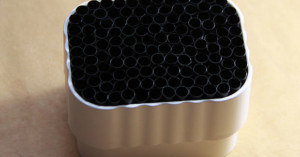
Photography enthusiast Jeff Vier made himself a cheap DIY grid spot using a …
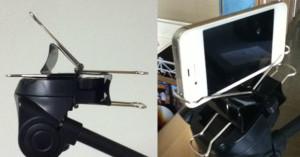
Want to attach your smartphone to your tripod without buying a special mount? Two large binder clips can do …
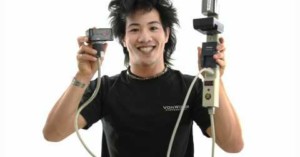
Here’s a simple tip by photographer Benjamin Von Wong for traveling abroad: you …

Fujifilm announced back in January at CES that it was working on an M-mount adapter for the …
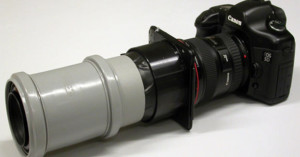
Hyperspectral cameras are capable of collecting and processing information across the electromagnetic spectrum …

Nikonian DSLR shooters will soon be able to use their existing F-mount lenses with Nikon’s 1 System …